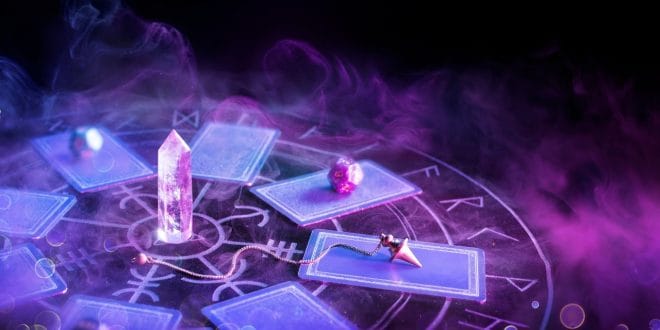If you’ve ever done a tarot reading and pulled cards like Death, The Tower, or The Devil, you may have felt a wave of anxiety. These cards often have a reputation for being “scary,” but the truth is, they’re far more complex—and often more helpful—than they seem at first glance.
In this article, I’ll explain what these so-called scary tarot cards really mean, how to interpret them in a balanced way, and how to approach your readings with confidence, even when unsettling cards appear.
Why Do Certain Tarot Cards Feel Scary?
Some tarot cards depict imagery of destruction, loss, or darkness, which can trigger fear or discomfort. However, tarot is a tool for growth, and even the most intimidating cards are meant to offer guidance and transformation, not punishment or doom.
These cards often symbolize major life transitions, breakthroughs, and deep lessons—which can be challenging but ultimately lead to personal growth. When you understand their deeper meanings, you’ll see that they are not meant to be feared but respected for the wisdom they provide.
1. The Death Card – Endings and Transformations
The Death card is one of the most misunderstood cards in the tarot deck. Contrary to popular belief, it almost never signifies literal death. Instead, it represents endings, transformation, and rebirth.
What It Really Means:
The Death card encourages you to let go of the old to make space for the new. This could involve ending a job, relationship, or phase of life that no longer serves you. While the change may feel difficult, it’s often necessary for growth.
How to Navigate It:
- Reflect on areas in your life that feel stagnant or restrictive.
- Ask yourself, “What am I holding onto that I need to release?”
- Focus on the opportunity for renewal and personal evolution.
Example: You pull the Death card during a career reading. Instead of panicking, consider whether it’s time to leave your current job for a new opportunity that better aligns with your goals.
2. The Tower – Sudden Upheaval and Liberation
The Tower is often depicted as a structure being struck by lightning, with people falling from it. This imagery can feel dramatic, but the Tower’s message is about breaking down false foundations and liberating yourself from illusions.
What It Really Means:
The Tower signals unexpected change that may feel chaotic or disruptive. However, this change clears away what is no longer sustainable, paving the way for truth and authentic growth.
How to Navigate It:
- Accept that some situations may need to fall apart to create space for something better.
- Focus on staying grounded and adapting to change.
- Look for the lesson or opportunity hidden within the upheaval.
Example: You pull the Tower card while asking about a relationship. This could indicate a sudden argument or revelation, but it may also lead to a more honest and stable connection once the truth is revealed.
3. The Devil – Breaking Free from Limitations
The Devil often causes anxiety due to its association with temptation, addiction, and control. However, this card isn’t about evil forces controlling your life. Instead, it highlights unhealthy attachments and self-imposed limitations.
What It Really Means:
The Devil card invites you to examine where you feel trapped—whether in toxic relationships, negative thought patterns, or bad habits. It urges you to reclaim your power by recognizing and breaking free from these influences.
How to Navigate It:
- Identify areas where you feel restricted or powerless.
- Take small steps to regain control and freedom in your life.
- Seek support if you’re struggling to overcome a challenging pattern.
Example: You pull the Devil card while asking about your finances. This could indicate overspending or being tied to financial fears. By confronting these issues, you can begin to build healthier financial habits.
4. The Ten of Swords – Painful Endings
The Ten of Swords is one of the most visually intense cards, often showing a person lying face-down with swords in their back. It symbolizes painful endings, betrayal, and emotional release.
What It Really Means:
This card acknowledges that you may be going through a difficult experience. However, it also suggests that the worst is behind you and that a new chapter is beginning.
How to Navigate It:
- Allow yourself to grieve or process your emotions.
- Recognize that endings often lead to healing and new opportunities.
- Focus on moving forward with hope and resilience.
Example: You pull the Ten of Swords after a breakup. While it validates your pain, it also encourages you to release the past and trust that healing is on the horizon.
5. The Hanged Man – A Shift in Perspective
The Hanged Man often appears unsettling because it shows someone suspended upside down. However, this card is not about suffering—it’s about pause, surrender, and seeing things from a new perspective.
What It Really Means:
The Hanged Man suggests that you may feel stuck or in limbo. However, this period of waiting or reflection can offer valuable insights and a chance to reassess your priorities.
How to Navigate It:
- Embrace patience and trust the process.
- Look at your situation from a different angle.
- Use this time for inner growth and spiritual reflection.
Example: You pull the Hanged Man while asking about a delayed project. This card suggests that the delay may offer a hidden opportunity to rethink your approach or gain clarity.
Tips for Handling “Scary” Cards in Readings
If you pull a card that feels intimidating, try these strategies to stay grounded and open to its message:
1. Take a Deep Breath
Pause and remind yourself that tarot is a tool for guidance, not a prediction of doom. Breathe deeply to calm your mind and reduce anxiety.
2. Focus on the Lesson
Ask, “What is this card trying to teach me?” Tarot is meant to help you grow, and even difficult cards carry valuable lessons.
3. Consider the Context
Look at the surrounding cards in your reading. They can provide additional context, helping you understand whether the change is short-term or part of a larger transformation.
4. Trust Your Intuition
Your first impression of a card may offer insight beyond its traditional meaning. Trust your inner voice to guide your interpretation.
5. Seek Support if Needed
If you’re feeling overwhelmed, consult a trusted tarot reader or friend for a second perspective. Sometimes an outside viewpoint can help you see the card’s message more clearly.
“Scary” tarot cards like Death, The Tower, and The Devil may initially seem intimidating, but they are powerful tools for growth, healing, and self-discovery. By approaching them with an open mind and a willingness to learn, you can transform fear into empowerment and use their guidance to navigate life’s challenges with confidence.
Next time you encounter one of these cards, remember: Tarot isn’t here to scare you—it’s here to guide you toward your highest potential.
What’s been your experience with pulling a challenging card? Share your insights and stories in the comments below!
 Lifeved The Keys to a Better
Lifeved The Keys to a Better



 by
by